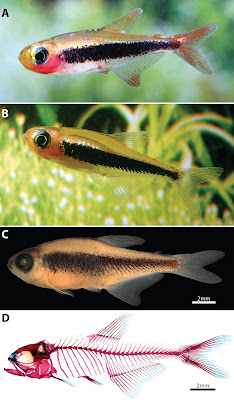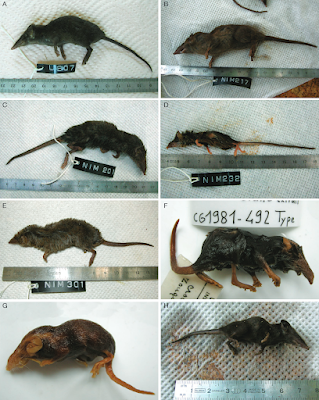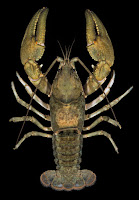 |
| Barbodes sellifer Kottelat & Lim, 2021 |
Abstract
Barbodes sellifer, new species, is described from Singapore, the southern Malay Peninsula and Riau (Sumatra). It is distinguished by having, among others, a large triangular to rectangular blotch between the dorsal fin and the midlateral row of scales (+1). Barbodes zakariaismaili, new species, is described from the Jelai watershed of the Pahang drainage. It is distinguished, among others, by having an elongated blotch on the anterior third of scale rows 0 and +1, and a narrow, faint bar between dorsal-fin origin and scale row +1. The existence of the supposed B. binotatus cryptic species is discussed; it does not satisfy any of the criteria under different concepts and this terminology should not be used. Among others, it is made of diagnosable units, and the morphological disparity among the supposed ‘cryptic’ taxa is not substantially lower than among non-‘cryptic’ relatives. It is simply a taxonomically difficult group.
Key words. Barbodes, Singapore, Malaysia, cryptic species
Barbodes sellifer, new species
Diagnosis. Barbodes sellifer, new species, is distinguished
from all other species that have been placed in the B.
binotatus group by the presence in adults of a large triangular
to rectangular blotch extending downwards from in front of
and below the base of the dorsal fin in adults (sometimes
incomplete or narrower); juveniles have a midlateral row of
3–5 black spots, with the second spot vertically elongated,
contacting a small spot below branched dorsal-fin rays 1–2.
Etymology. Sellifer is a Latin adjective meaning ‘bearing a
saddle’ (feminine: sellifera, neuter: selliferum).
Barbodes zakariaismaili, new species
Diagnosis. Barbodes zakariaismaili, new species, is
distinguished from all other species of the B. binotatus
group by its unique colour pattern in adults, including a faint
longitudinally elongate blackish midlateral mark from the
upper extremity of the gill opening to below the dorsal-fin
origin; a black spot below the anterior part of the dorsal-fin
base, extending downwards to the midlateral row as a narrow
triangular mark; and a blackish spot at the end of the caudal
peduncle. Other characters useful for identification, but not
unique to the species, are: slender body (depth 2.9–3.1 times
in SL); interobital area convex; eye not flush with dorsal
profile, relatively small (4–5 times in head length, 1.5–1.9
times in interorbital distance); juveniles with a conspicuous
reticulate pattern made of black pigments on scale pockets.
Etymology. The species is named for Mohd. Zakaria-Ismail
in appreciation for his work on the fish fauna of Malaysia.
A noun in the genitive, indeclinable.
Maurice Kottelat and Kelvin K. P. Lim. 2021. Two New Species of Barbodes from the Malay Peninsula and Comments on ‘Cryptic Species’ in the B. binotatus Group (Teleostei: Cyprinidae). RAFFLES BULLETIN OF ZOOLOGY. 69; 522–540.
















































